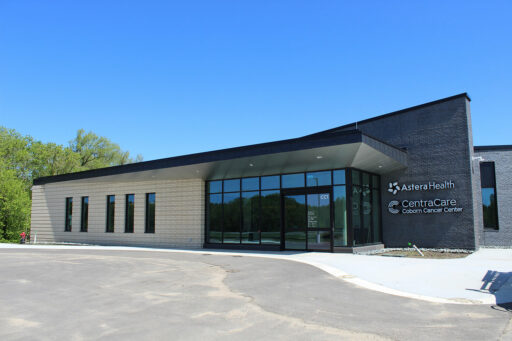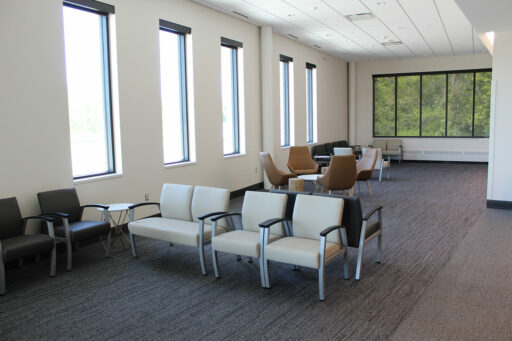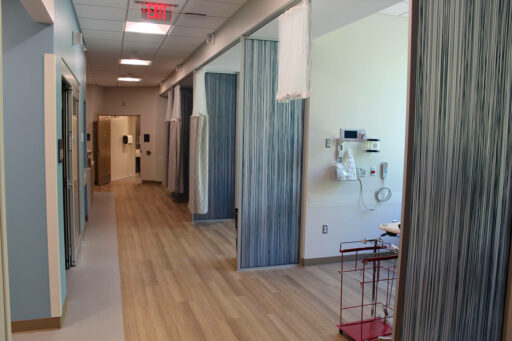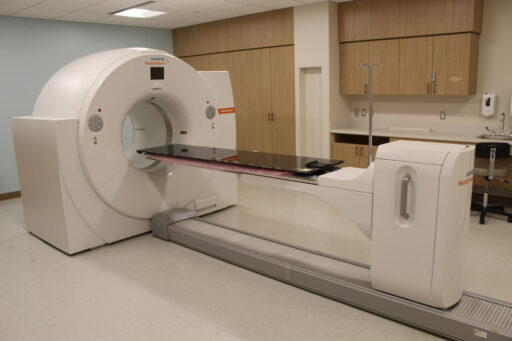Cancer Care Services
Facing cancer is never easy, but you don’t have to do it alone. At the Astera Health/CentraCare – Coborn Cancer Center, we bring expanded cancer care services to our community. With cutting-edge technology, experienced providers, and compassionate support, you’ll receive expert care close to home every step of the way.
We’re Here For You
Cancer is a life-changing diagnosis, and it can feel overwhelming. But at Astera Health, you’re not alone. Our dedicated cancer care team walks beside you with compassion, support, and clinical expertise at every step. Through our partnership with CentraCare, we now offer a full range of cancer treatments, advanced imaging, and highly specialized technology right here at home.
The Astera Health/CentraCare – Coborn Cancer Center is home to experienced providers and skilled nurses who deliver personalized care that focuses on healing both the body and mind.
The radiation oncology team includes:
The medical oncology team includes:
Your Comprehensive Cancer Care Journey
At the Astera Health/CentraCare – Coborn Cancer Center, we offer more than just treatment; we provide a comprehensive care experience. From the types of cancer we treat to the advanced technology we use, here’s what you can expect when you choose us for your care.
From early diagnosis to survivorship, our center treats a broad range of cancers including:
- Breast cancer
- Colorectal cancer
- Lung cancer
- Prostate cancer
- Skin cancer
- Hematologic cancers (e.g., leukemia, lymphoma)
- And more
Your personalized treatment plan may include a combination of:
- Chemotherapy
- Radiation Therapy
- Immunotherapy
- Hormone Therapy
- Targeted Therapy
- Palliative Care
- Genetic Counseling
- Nutritional and Social Support Services
We offer the latest in precision cancer treatment:
- Linear accelerators with high-definition beam targeting
- PET/CT imaging for precise diagnosis and monitoring
- Electronic brachytherapy for localized radiation treatment
- Real-time image-guided radiation therapy (IGRT)
As part of the Astera Health/CentraCare Coborn Cancer Center, you benefit from:
- Access to a network of coordinated care across multiple locations
- Continuity of treatment, even if a staff member or machine is temporarily unavailable
- Calibrated technology across the network to ensure seamless, high-quality care
This partnership means your care stays consistent and uninterrupted, no matter what.
Take a Look Inside





Virtual Tour: Astera Health/CentraCare – Coborn Cancer Center
Step inside the Astera Health/CentraCare – Coborn Cancer Center and see how world-class cancer care is now closer to home. This state-of-the-art facility brings advanced treatments and compassionate care to our region, reducing travel for patients and helping them focus on what matters most – healing.
Don Jurgens, MD
Don Jurgens, MD, is an oncologist with the CentraCare Coborn Cancer Center who sees patients at the Astera Health main campus. He believes cancer care is comprehensive and the upcoming cancer center in Wadena will be extremely valuable for patients undergoing treatment.
Jamie Udy, APRN, FNP
For Jamie Udy, APRN, FNP, cancer care is about treating the whole patient, not just the disease. She makes sure her patients have their questions answered so they can take on the diagnosis together as a team.
Megan Hodges, MD
Dr. Megan Hodges brings a patient-centered, holistic approach to cancer care at Astera Health. With a special focus on cancer survivorship, she supports patients through every step of their healing journey.
Shaping Tomorrow’s Care: Investing in a New Cancer Center
Hear from Astera Health patients about what a cancer center close to home would mean for people battling this disease.
CONTACT US
Make an Appointment: 218-631-3510 or Schedule Online
Astera Health/CentraCare - Coborn Cancer Center
421 11th St NW, Wadena, MN 56482
Clinic Hours:
Monday – Friday, 8 a.m. – 4:30 p.m.
